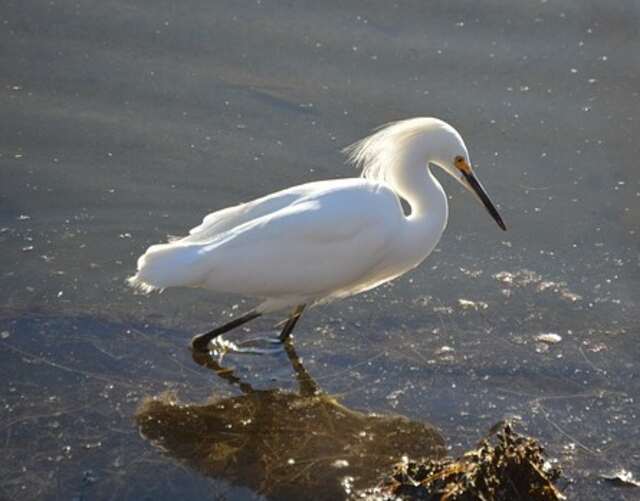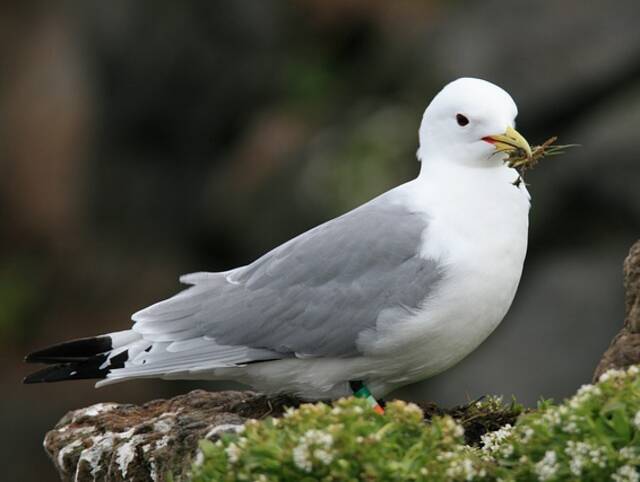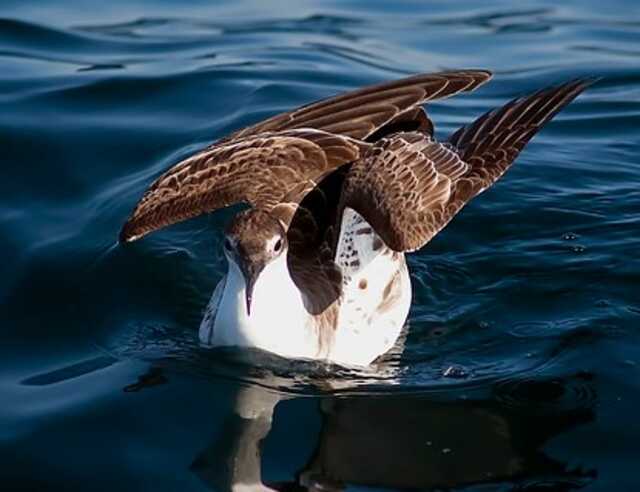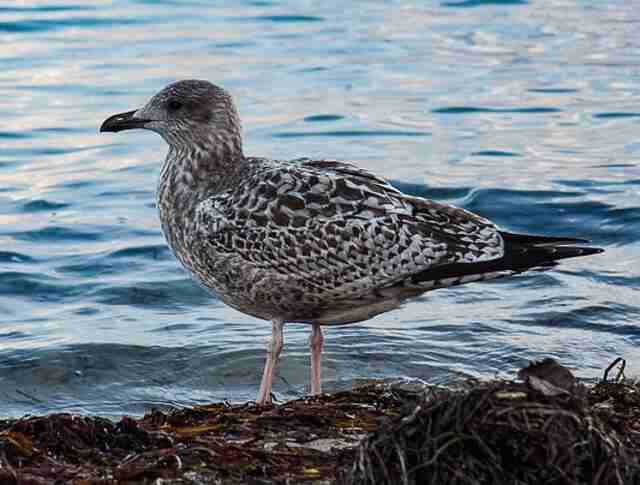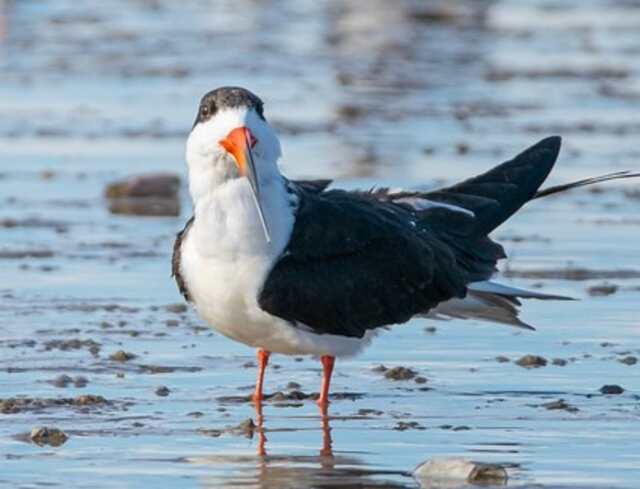Hey there! If you’ve ever hung out by the beach or a body of water, you’ve probably seen seagulls chilling and scavenging for snacks. But here’s a fun fact: not all birds that resemble seagulls are actually seagulls!
In this blog post, we’re going to introduce you to 29 bird species that share similarities with seagulls, but each have their own unique features and behaviors.
Knowing how to distinguish between these birds can be useful in many ways. For instance, if you’re a birdwatcher, being able to identify different species can make your hobby even more exciting.
And if you’re involved in environmental efforts like beach cleanups, recognizing the types of birds present in the area can help you better understand the local ecosystem and take appropriate actions to protect it.
So whether you’re a nature enthusiast or just curious about the diversity of bird species, come join us as we embark on a journey to discover 30 birds that look like seagulls but are not!
Table of Contents
- 1 Seagull (Overview)
- 2 Birds That Look Like Seagulls
- 2.1 Snowy Egrets
- 2.2 Northern Fulmars
- 2.3 Cape Gannets
- 2.4 Yellow-legged Kittiwakes
- 2.5 White-tailed Kites
- 2.6 Great Shearwaters
- 2.7 Great Skuas
- 2.8 Red-Footed Booby
- 2.9 White-Fronted Tern
- 2.10 Common Tern
- 2.11 Whiskered Tern
- 2.12 Black-Legged Kittiwake
- 2.13 White Tern
- 2.14 Roseate Tern
- 2.15 Least Tern
- 2.16 River Tern
- 2.17 Royal Tern
- 2.18 Black-browed Albatross
- 2.19 Arctic Tern
- 2.20 Laysan Albatross
- 2.21 Black Skimmer
- 2.22 Forster’s Tern
- 2.23 Crested Terns
- 2.24 Western Sandpiper
- 2.25 Sanderling
- 2.26 Ruddy Turnstone
- 2.27 Willet
- 2.28 Sandwich Tern
- 2.29 Little Egret
- 3 Why It’s Important to Differentiate Between Seagulls and Other Birds?
- 4 Conclusion
- 5 Author
Seagull (Overview)
Seagulls are a common sight along coastlines and bodies of water around the world. They belong to the family Laridae, which includes over 100 species of gulls, terns, and skimmers. Seagulls have a distinctive appearance with white and gray feathers, a sharp beak, and webbed feet that allow them to swim and wade in the water.
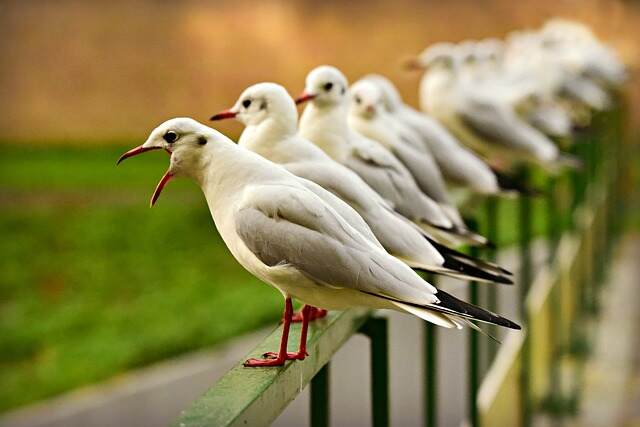
Brief History
Seagulls have been an important part of human culture for centuries. In Ancient Greece and Rome, they were seen as messengers of the gods and were often depicted in art and literature. In more recent times, seagulls have been celebrated in popular culture, appearing in songs, movies, and books.
Physical Characteristics
The size and appearance of seagulls differ depending on their species. They typically have white and gray feathers, with some species having distinctive markings or colors on their wings or head. They have sharp beaks that they use to catch fish and other prey, and webbed feet that allow them to swim and wade in the water.
Diet and Habitat
Seagulls are opportunistic feeders and will eat a wide range of foods, including fish, insects, and even garbage. They prefer to live near bodies of water, such as oceans, lakes, and rivers, where they can find food and shelter. They are also known to congregate in large numbers in areas where food is plentiful, such as fishing ports or garbage dumps.
Behavior and Communication
Seagulls are highly social birds and often form large flocks. They communicate with each other through a variety of calls and vocalizations, including squawks, screams, and whistles. During the breeding season, males will perform courtship displays to attract females, which can include displaying their wings and calling out.
Cultural Significance
Seagulls have played a significant role in human culture and mythology. In some cultures, they are seen as symbols of freedom and independence, while in others they are viewed as pests or nuisances. Seagulls have also been featured in art and literature throughout history, appearing in works by famous artists and writers. Today, they continue to be a beloved part of coastal communities around the world.
Birds That Look Like Seagulls
If you’re a beachgoer or coastal resident, you may be familiar with the sight of seagulls soaring over the water. But did you know that there are many other birds that share a similar appearance to seagulls? Here are 30 birds that look like seagulls but are actually different species:
Snowy Egrets
The Egret is a graceful, long-legged bird with a wingspan that can reach over five feet. These birds are commonly found in wetlands, marshes, and shallow bodies of water across the globe, from the Americas to Africa and Asia. Their diet consists primarily of fish, amphibians, and crustaceans, which they catch with their sharp beaks.
Egrets are known for their white, sleek plumage, which they use to blend into their surroundings while hunting. They are also recognized for their delicate, elegant movements, which make them a favorite among birdwatchers and nature enthusiasts. Seagulls and Egrets are both birds that are often found near bodies of water, but they have many differences as well.
Seagulls are larger and more robust than Egrets, with a wingspan that can exceed six feet. They have a more varied diet, which includes fish, insects, and even garbage. Unlike Egrets, Seagulls have gray or brown feathers, with a distinctive white head and tail.
Seagulls are known for their scavenging behavior, which makes them common sights at beaches and harbors. While Egrets are known for their graceful movements, Seagulls are more aggressive and can be quite vocal, especially when competing for food.
Northern Fulmars
The Northern Fulmar is a medium-sized seabird with a distinctive tube-like structure on top of its bill that helps excrete saltwater. They have a wingspan of up to 102 cm and a body length of around 48 cm. They can be found in the Arctic and sub-Arctic regions, including Alaska, Canada, and Greenland.
They inhabit cliffs, rocky shores, and islands. They feed mainly on small fish, krill, squid, and other crustaceans. Furthermore, they are known for their ability to regurgitate an oily stomach secretion to defend themselves from predators. Compared to the Northern Fulmar, seagulls are larger and more varied in size and appearance.
They are found in coastal regions worldwide, and their habitats range from beaches, harbors, and estuaries to open sea. Seagulls have a varied diet that includes fish, insects, crustaceans, and garbage. They are known for their scavenging behavior and opportunistic feeding habits.
Seagulls have different color patterns depending on their species, but they commonly have white and gray feathers with black markings on their wings and tail. Seagulls are social birds and often gather in flocks. Unlike the Northern Fulmar, they do not have a specialized gland to excrete saltwater.
Cape Gannets
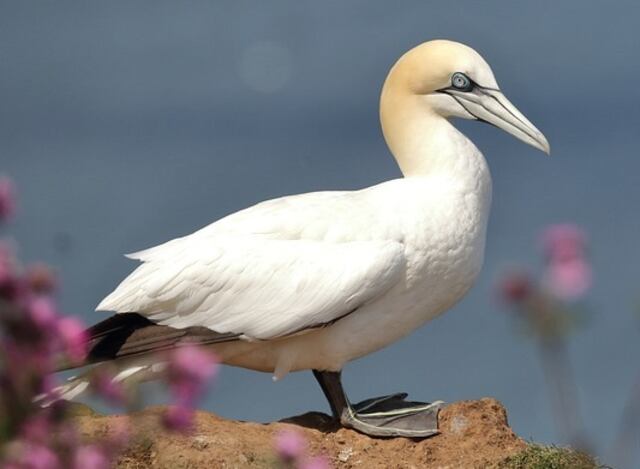
Cape Gannets are seabirds known for their impressive diving abilities, reaching depths of up to 15 meters to catch their prey. With their striking white plumage and yellowish-brown head, they are easy to spot in the air or on rocky coastal cliffs, where they nest in large colonies.
Cape Gannets are found across the Northern Hemisphere, from Canada to Russia, and mainly feed on fish such as mackerel, herring, and sand eels. Their wingspan can reach up to 2 meters, and they can weigh up to 3.6 kg, making them a formidable presence in the skies and waters they inhabit.
Although both Cape Gannets and Seagulls are seabirds, they have some key differences. Seagulls, with their distinctive gray and white plumage, can be found in a variety of habitats worldwide, including coastal areas, inland lakes, and garbage dumps. They are opportunistic feeders and will eat almost anything, including fish, insects, and even human food.
Seagulls are smaller than Cape Gannets, with a wingspan averaging around 1.2 meters, and tend to be more social, often seen in flocks. In terms of behavior, Gannets are known for their spectacular dives and precision hunting, while Seagulls are known for their scavenging habits and tendency to steal food from others.
Yellow-legged Kittiwakes
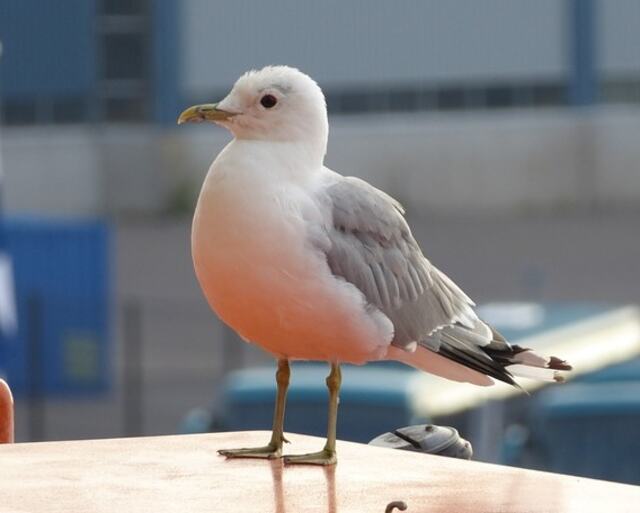
Yellow-legged Kittiwakes are a species of gull that are found throughout the circumpolar regions of the world, including the coasts of Alaska, Northern Europe, and northern Asia. These seabirds are known for their characteristic white plumage and yellow beaks. They typically feed on small fish and marine invertebrates, and can be found nesting on coastal cliffs and rocky outcroppings.
Yellow-legged Kittiwakes are highly adapted to life at sea, with specialized feathers that allow them to float effortlessly on the surface of the water, and sharp claws that help them to grasp onto the rocky ledges where they nest. While gulls and Yellow-legged kittiwakes are both members of the same family of seabirds, there are some notable differences between the two species.
Gulls are generally larger than kittiwakes and have a more varied diet, including scavenging for food on land as well as in the water. Gulls can also be found in a wider range of habitats, from urban areas to open ocean. In contrast, Yellow-legged kittiwakes are more specialized in their habitat requirements, preferring to nest on rocky cliffs near the sea.
Additionally, while gulls can be quite variable in coloration and appearance, Yellow-legged kittiwakes are generally white with a distinct black wingtip. Finally, while both species are social birds that often gather in large flocks, kittiwakes are known for their distinctive “kitti-wake” call, which they use to communicate with each other while at sea.
White-tailed Kites
Kites are birds of prey found across much of the world, including Europe, Asia, Africa, and the Americas. They are characterized by their long wings and forked tails, which allow them to soar effortlessly in the air while hunting for small mammals, birds, and insects. Kites are also known for their distinctive vocalizations, which often consist of high-pitched screams or whistles. In terms of habitat, kites can be found in a wide range of environments, including grasslands, woodlands, and wetlands.
They are also known for their adaptability and can be found in urban areas as well. The diet of kites varies depending on their location and prey availability, but they are known to feed on small mammals, birds, reptiles, and insects. While both kites and seagulls are birds, there are several key differences between the two species.
Seagulls are typically larger than kites and are found primarily in coastal regions around the world. Unlike kites, seagulls are scavengers and feed on a wide range of food items, including fish, insects, and even garbage. Seagulls also have a distinct appearance, with white or gray feathers and black markings on their wings and tails.
In terms of behavior, seagulls are known for their raucous calls and social behavior, often congregating in large flocks. Kites, on the other hand, are solitary hunters and tend to be more vocal when defending their territory or mating. While both species are adapted to life in the air, kites are generally more agile flyers, with the ability to perform acrobatic maneuvers in pursuit of prey.
Great Shearwaters
Shearwaters are seabirds known for their long, slender wings and graceful flight. They are found in oceans worldwide, from the Arctic to the Antarctic. Shearwaters are pelagic birds, spending most of their life at sea, except during the breeding season. They feed on a diet of fish, squid, and crustaceans, often diving deep into the water to catch their prey.
Shearwaters are also known for their distinctive vocalizations, which they use to communicate with their mates and offspring.While seagulls are also seabirds, they differ from shearwaters in several ways. Seagulls are found in coastal areas around the world and are not exclusively pelagic like shearwaters.
They have a varied diet, including fish, crustaceans, and even garbage, and are opportunistic feeders. Seagulls are generally larger than shearwaters, with a different body shape and wing structure. They also have different coloration and behaviors, with some species being more aggressive and territorial than others.
Great Skuas
Skuas are a group of seabirds that are known for their aggressive behavior and kleptoparasitic feeding habits. They have a stout body with a hooked beak, sharp talons, and powerful wings that enable them to snatch food from other birds in mid-air. Skuas are found in sub-Antarctic and Arctic regions around the world, nesting on rocky cliffs or on the ground.
They feed on a variety of prey, including fish, krill, and other seabirds, and they also scavenge carrion. Skuas are highly territorial and will defend their nesting sites vigorously, often mobbing and harassing intruders. Seagulls, on the other hand, are a more diverse group of birds that are found in coastal regions around the world.
They have a sleeker body, longer wings, and a straighter beak than skuas. Seagulls are opportunistic feeders and will consume a variety of food, including fish, crustaceans, and insects, as well as human refuse. They have a wide range of habitats, from urban areas to rocky cliffs, and can be found in both saltwater and freshwater environments.
While some species of seagulls are known for their aggressive behavior, they generally do not exhibit the same level of territoriality as skuas.
Red-Footed Booby
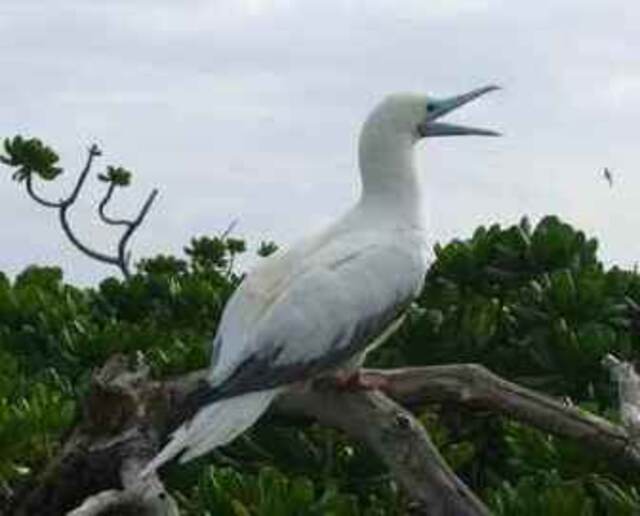
The Red-footed Booby is a unique seabird that is identified by its strikingly red feet and blue beak. They are found in the tropical regions of the Pacific, Atlantic, and Indian Oceans. The Red-footed Booby is a masterful diver that can reach depths of over 10 feet to catch fish and squid. Their preferred habitat is on rocky islands, coral reefs, and cliffs where they can build nests using twigs, leaves, and grass.
These birds are known for their bright colors and acrobatic abilities, making them a sight to behold for birdwatchers and nature enthusiasts alike. In comparison, seagulls are a diverse group of birds that can be found across the globe in a variety of habitats, including coastal regions, lakes, and rivers.
Unlike the Red-footed Booby, seagulls are not as brightly colored, with most species having white, gray, and black feathers. Seagulls are omnivores, eating both fish and invertebrates, as well as scavenging for human food waste.
While Red-footed Boobies are known for their diving abilities, seagulls are more adept at flying and hovering over the water to catch their prey. Despite their differences, both birds play important roles in their respective ecosystems and are fascinating creatures to observe in their natural habitats.
White-Fronted Tern
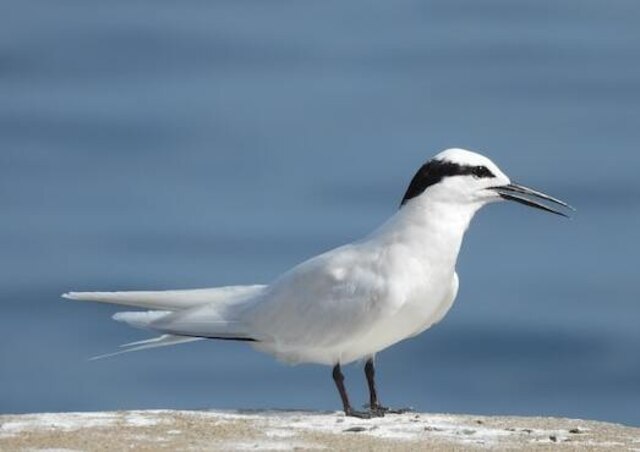
The White-Fronted Tern (Sterna striata), also known as the laughing or muttonbird, is a small, elegant seabird found in New Zealand, Australia, and nearby islands. They have distinctive white foreheads, black caps, and gray wings, with a forked tail. They are agile fliers, often seen diving into the ocean to catch small fish and krill, and feed on small invertebrates as well.
White-Fronted Terns breed in large colonies on rocky shores, cliffs, and islands, and their nests are shallow scrapes in the sand or gravel. They are highly social, often seen in groups, and have a distinctive, high-pitched call. In contrast, Seagulls (family Laridae) are a diverse group of seabirds found worldwide, with over 50 different species.
Unlike the White-Fronted Tern, they are generally larger, with more robust bodies, and can be found in a wider range of habitats, including coastal, estuaries, and inland areas. Seagulls also have a wider range of diets, including fish, crustaceans, insects, and even human food scraps.
They have a distinctive appearance, with white and gray plumage and strong, hooked beaks. Seagulls are also highly social, and are often seen in large flocks, especially around human habitation. However, they have a more aggressive and opportunistic feeding style, and are sometimes considered a pest species.
Common Tern
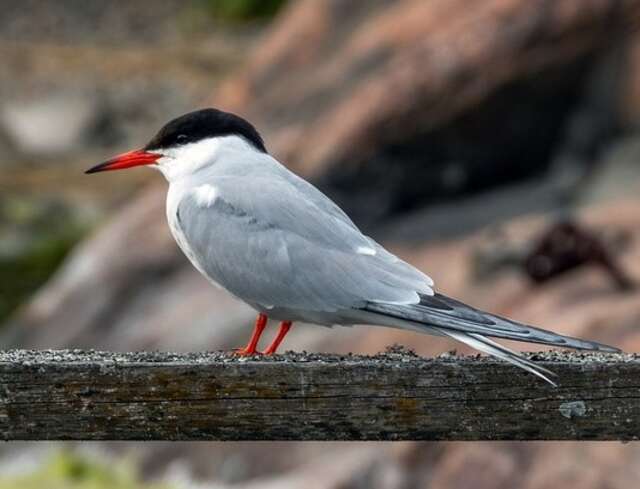
The Common Tern (Sterna hirundo) is a small seabird species that belongs to the family Laridae. This bird is characterized by its forked tail, gray wings, and white underparts. The Common Tern has a global range, and its breeding grounds include North America, Europe, and Asia. This bird inhabits coastal areas such as beaches, salt marshes, and estuaries.
Its diet primarily consists of fish, but it also feeds on invertebrates such as shrimp, crabs, and insects. The Common Tern is known for its impressive diving abilities, as it can dive into the water to catch its prey from a height of up to 20 feet. In comparison to the Common Tern, the Seagull is a larger bird species that belongs to the same family,
Laridae. Seagulls have a wider range and can be found in almost every part of the world, including inland and coastal areas. They inhabit habitats such as beaches, cliffs, and landfill sites. Seagulls have a more diverse diet than the Common Tern, as they feed on fish, invertebrates, rodents, and even carrion.
Their appearance varies depending on the species, but they typically have white and gray feathers with black markings. Seagulls are known for their scavenging behavior and their ability to steal food from other birds.
Whiskered Tern
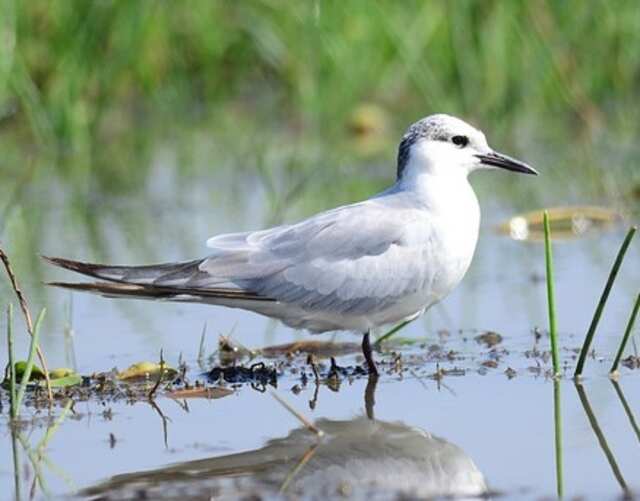
The Whiskered Tern (Chlidonias hybridus) is a small, migratory bird species found in wetlands and marshes throughout Europe, Africa, and Asia. These birds are characterized by their distinctive gray and white plumage, long tail streamers, and black facial markings that resemble a mustache or whiskers.
They have a slender body and a wingspan of 65-70 cm. The Whiskered Tern feeds on small fish, insects, and crustaceans, which they catch by swooping low over the water surface or by diving. In contrast to the Whiskered Tern, Seagulls are larger and more robust, with a wingspan of 1.0 to 1.7 meters.
They are found in coastal areas worldwide and have adapted to a variety of habitats, from beaches and cliffs to urban areas and garbage dumps. Seagulls have a range of different plumage colors, including white, gray, and brown, and they are known for their loud calls and aggressive behaviors.
Unlike the Whiskered Tern, Seagulls are omnivorous and will eat anything from fish and shellfish to insects, rodents, and even other birds. Despite their differences, both birds are known for their graceful flight patterns and adaptability to changing environments.
Black-Legged Kittiwake
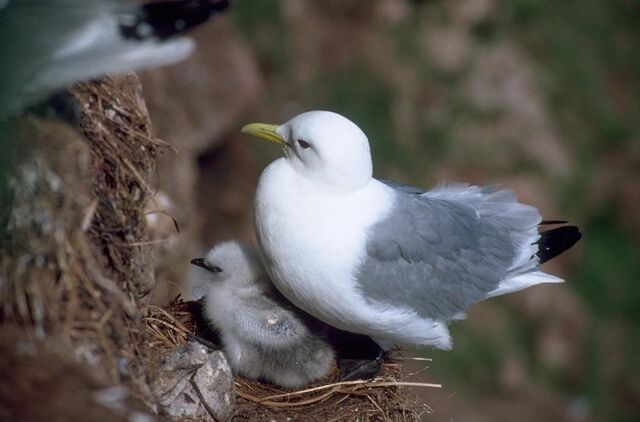
The Black-Legged Kittiwake (Rissa tridactyla) is a small gull species that breeds in colonies on coastal cliffs and islands throughout the circumpolar Arctic. They are easily identified by their gray mantle, white head and underparts, and distinctive black wingtips.
Black-Legged Kittiwakes feed primarily on small fish and planktonic crustaceans, which they catch by diving into the water from the air. They are highly adapted to a marine lifestyle, with webbed feet for swimming and waterproof feathers to keep them dry.
Although often confused with seagulls, Black-Legged Kittiwakes are actually a distinct species within the gull family. Unlike seagulls, they are exclusively marine, rarely venturing inland or to freshwater habitats. They are also smaller than many seagull species, measuring only 37-41 cm in length with a wingspan of 87-102 cm.
Seagulls are generally larger and more varied in their habitats and diets, with some species inhabiting deserts and grasslands, and others feeding on carrion and waste in urban areas. However, both Black-Legged Kittiwakes and seagulls are important predators in marine ecosystems and play a vital role in maintaining the balance of their coastal habitats.
White Tern
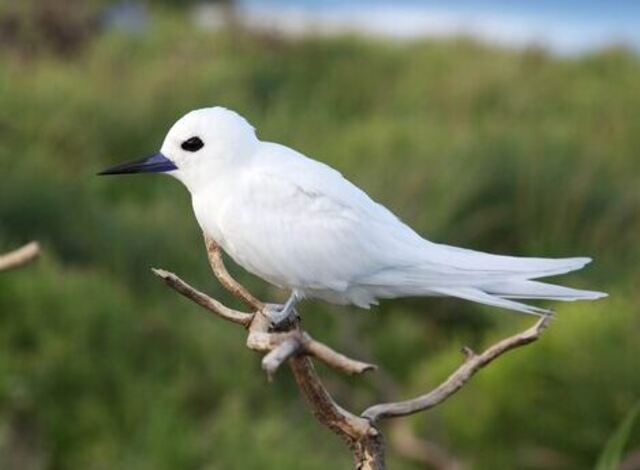
The White Tern, also known as the Fairy Tern, is a graceful seabird that inhabits tropical and subtropical regions worldwide. It is a small bird, about 25-32 cm in length, with a wingspan of up to 87 cm. The White Tern has a distinctive appearance, with its pure white plumage, dark eyes, and slender wings.
It is known for its graceful, buoyant flight, often gliding effortlessly over the water’s surface. White Terns prefer to nest on tree branches, building nests of sticks, leaves, and other materials. The primary components of their diet are small fish and squid.
While Seagulls and White Terns share some similarities, there are many differences between these two seabirds. Seagulls are much larger than White Terns, ranging from 30-80 cm in length, with a wingspan of up to 1.7 meters.
They have a more robust body and powerful beak, and their plumage is all white. Seagulls are opportunistic feeders, scavenging for food on the beach, in the water, and in urban areas.
They are known for their raucous calls and social behavior, often congregating in large flocks. While White Terns and Seagulls may share similar habitats, their diet, size, appearance, color, habits, and behaviors are markedly different.
Roseate Tern
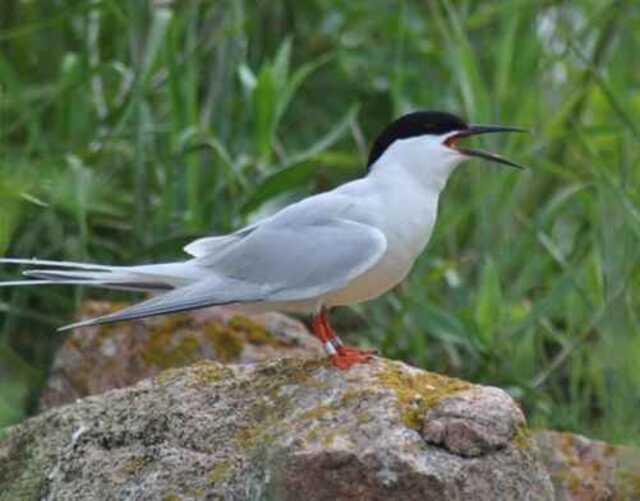
The Roseate Tern is a small migratory seabird with a distinct black cap and a rose-pink breast in breeding plumage. They have a sharp, pointed bill and a forked tail. These terns breed in colonies on sandy or rocky coasts, islands, and salt marshes in the North Atlantic and Caribbean.
Their primary food sources are small fish, crustaceans, and insects. They are known for their unique courtship displays and aerial acrobatics. Threats to their population include habitat loss, predation, and overfishing. Seagulls, on the other hand, are a diverse group of seabirds that come in various sizes and colors.
They have a generalist diet that includes fish, invertebrates, and even human food waste. Seagulls are found worldwide, inhabiting coastal areas, wetlands, and even urban environments. Their appearance ranges from small and sleek to large and chunky, with gray or white feathers and various patterns.
Seagulls are known for their aggressive behavior and loud vocalizations, often competing with each other for food or territory. Despite some similarities in habitat and diet, the Roseate Tern and Seagull have distinct physical and behavioral differences.
Least Tern
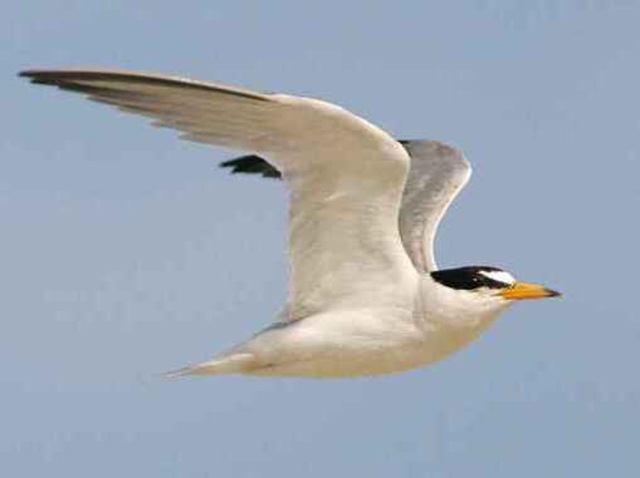
The Least Tern is a small, migratory bird that breeds on sandy beaches, river sandbars, and open, sparsely vegetated areas along the Atlantic, Gulf of Mexico, and Pacific coasts of North America. They average only 8-9 inches in length, and have a wingspan of about 21–23 inches and weigh up to 1.9 ounces. The bird has a distinctive white forehead, black cap, and a yellow bill.
The Least Tern’s diet mainly consists of small fish, shrimp, and other invertebrates that they catch by diving into the water from the air. Due to habitat loss and disturbance, the Least Tern is listed as a threatened species. In contrast, Seagulls are a group of large and diverse seabirds that are found worldwide.
They have a wider range of habitats, including coastal cliffs, urban areas, and offshore islands. Seagulls are opportunistic feeders and their diet includes fish, crustaceans, insects, and even garbage. They are larger than the Least Tern, with a wingspan ranging from 24 to 60 inches, and can weigh up to 3.5 pounds.
They have a varied appearance and coloration, with some species having gray or brown feathers, while others have white, black, or mottled plumage. Seagulls are also known for their distinctive habits, such as their loud calls, scavenging behavior, and flocking in large numbers.
River Tern
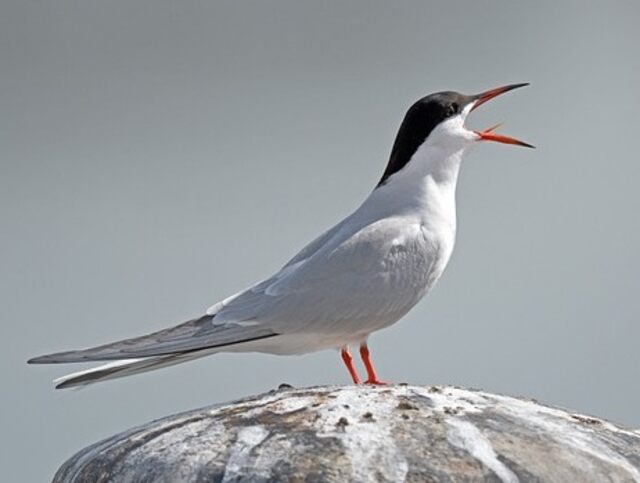
The River Tern is a small, elegant bird that is found in Europe and Asia. It measures around 38-44 cm in length and has a wingspan of about 80-85 cm. The River Tern has a distinctive white belly and black cap, with gray upperparts and a forked tail.
This bird is a common sight near freshwater rivers, streams, and wetlands. Its diet consists of small fish, insects, and crustaceans that it catches by diving from the air or water. In contrast, the Seagull is a larger bird that can be found all over the world, in both coastal and inland areas.
It ranges in size from 30 cm to over a meter in length, depending on the species. Seagulls have a varied diet, including fish, crustaceans, and even garbage in urban areas. They are usually white or gray with black markings, and some species have a distinctive red beak.
Seagulls are known for their scavenging behavior and are often found near fishing boats and on beaches. Unlike the River Tern, seagulls do not have a forked tail and are not as specialized in their habitat and diet preferences.
Royal Tern
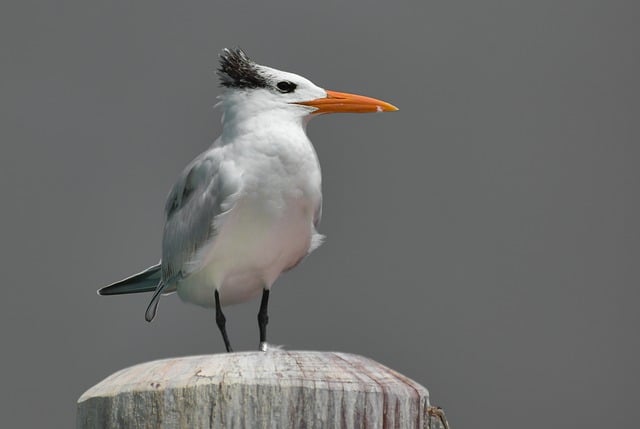
The Royal Tern is a coastal bird with a distinctive black cap and orange bill. It has a length of approximately 17 inches, a wingspan of 50 inches and weighs around 12–16 ounces. The Royal Tern can be found along the Atlantic and Gulf coasts of North America, as well as in parts of South America.
They prefer to nest on sandy beaches or islands and feed on small fish, crustaceans, and insects. During breeding season, they display elaborate courtship rituals, including offering fish to their mates. The Seagull, on the other hand, is a broad term that encompasses a variety of gull species found worldwide.
They come in various sizes, ranging from the tiny Little Gull to the Great Black-backed Gull. Seagulls are opportunistic feeders and will eat almost anything, from fish and shellfish to insects, small mammals, and even garbage. They can be found in a wide range of habitats, including beaches, coastal cliffs, and urban areas.
Unlike the Royal Tern, Seagulls do not have a distinctive black cap or orange bill, and their appearance can vary depending on the species. However, they share similar behaviors, such as scavenging for food and nesting in colonies.
Black-browed Albatross
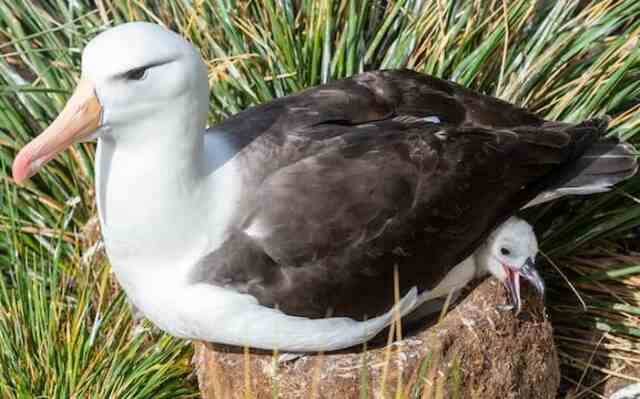
The Black-browed Albatross is a large seabird that can be found in the Southern Ocean. They have distinctive black eyebrows and a white head and body with black wings and tail. Their wingspan can reach up to 2.5 meters, and they have a lifespan of up to 70 years.
Black-browed Albatrosses primarily feed on fish, squid, and krill. They breed on sub-Antarctic islands and form long-term pair bonds.
In contrast to the Black-browed Albatross, seagulls have a more diverse range and can be found worldwide. They typically inhabit coastal regions and feed on a wide range of food, including fish, small mammals, and human food waste.
Seagulls are generally smaller than albatrosses, with a wingspan ranging from 1 to 1.7 meters. They have a variety of plumage colors, including white, gray, and brown. Unlike albatrosses, seagulls do not mate for life and are known for their scavenging habits.
Arctic Tern
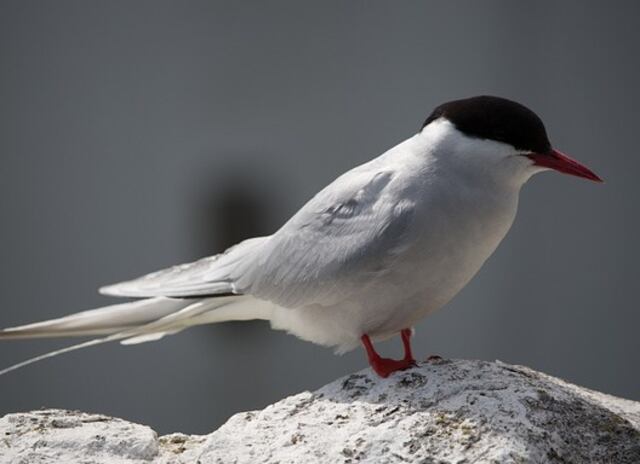
The Arctic Tern is a remarkable bird that boasts the longest migration of any known bird species. With a wingspan of up to 2.5 feet, they are easily recognizable by their slender, curved wings and pointed tails. Their striking black caps, red bills, and white bodies make them stand out against the blue Arctic sky.
They breed in the Arctic tundra and migrate to the Antarctic in the winter, covering up to 44,000 miles round-trip. Their diet consists of small fish, crustaceans, and insects, which they catch while flying low over the water. In contrast, the Seagull is a general term used to refer to various species of gulls, which can be found worldwide.
They have a more robust and stocky build than the Arctic Tern and can range in size from 11 to 16 inches in length. Seagulls are known for their scavenging habits, often seen swooping down to grab food scraps from people or scavenging from garbage dumps.
They also have a diverse diet that includes fish, insects, and small mammals. While Seagulls can be found in coastal habitats, they can also be found inland near lakes, rivers, and landfills. Unlike the Arctic Tern, Seagulls do not migrate as far and do not have a distinct breeding range.
Laysan Albatross

The Laysan Albatross (Phoebastria immutabilis) is a large seabird with a wingspan of up to 6.5 feet. They have a distinctive white head and nape, black wings and back, and a white belly. These birds breed on remote islands in the Pacific Ocean, with their largest colony located on Laysan Island in the Hawaiian archipelago. They primarily feed on squid and fish, foraging over vast areas of open ocean.
Laysan Albatrosses are known for their long lifespans, with the oldest known individual reaching over 60 years of age. In contrast to the Laysan Albatross, seagulls (family Laridae) are smaller birds with a wingspan of up to 5 feet. They have a wide range, with some species found in coastal areas around the world.
Seagulls have a varied diet that includes fish, invertebrates, and even human food scraps. They are typically more opportunistic than the Laysan Albatross, scavenging for food in urban areas as well as on the coast. Seagulls also have a more diverse range of habitats, with some species nesting on cliffs and others on beaches.
Their appearance and coloration vary depending on the species, but they are generally more brightly colored than the Laysan Albatross. Seagulls are also known for their distinctive calls and social behavior, often congregating in large groups.
Black Skimmer
The Black Skimmer is a distinctive bird species with its long, thin, and red-tipped bill. It has a black upper body and white underparts, and its wingspan can reach up to 50 inches. Black Skimmers are found in coastal regions, estuaries, and lagoons along the eastern and western coasts of North and South America.
They are skilled at skimming the water’s surface with their lower bill to catch small fish, crustaceans, and insects. Black Skimmers breed in large colonies on sandy beaches and are known for their distinctive and noisy calls.
Compared to the Black Skimmer, the Seagull is a more general term that refers to various species of gulls found worldwide. Seagulls have a white body with gray or black wings, and their wingspan can vary from 12 to 60 inches depending on the species.
They are found in coastal regions, but also inhabit inland areas such as lakes and rivers. Seagulls are opportunistic feeders and have a diverse diet that includes fish, insects, and human food waste. Unlike Black Skimmers, Seagulls are solitary nesters and have various nesting habits depending on the species.
Forster’s Tern
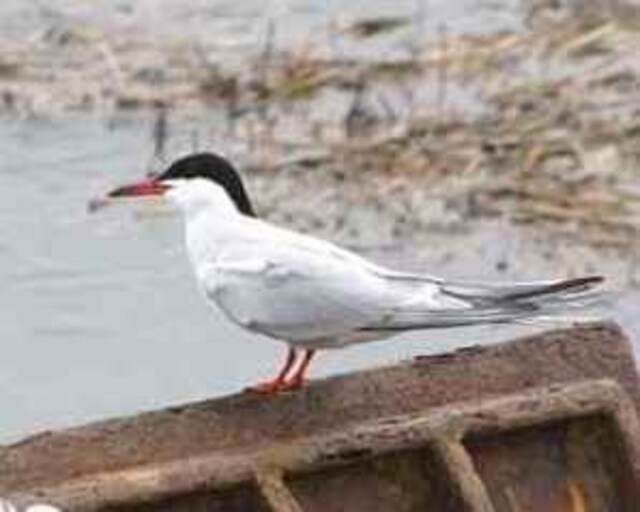
The Forster’s Tern (Sterna forsteri) is a medium-sized bird of the tern family, easily recognizable by its distinctive black cap and white forehead. It has a long, slender bill that is yellow-orange with a black tip. The species is found primarily along the coasts of North and South America, breeding in marshes, ponds, and lakes, and migrating to estuaries and coastal waters during the non-breeding season.
Forster’s Terns are opportunistic feeders, consuming small fish, crustaceans, and insects. In comparison, the Seagull is not a specific bird species, but a common name for several species of gulls. Unlike the Forster’s Tern, gulls have a more robust build with a larger head, heavier bill, and broader wingspan.
They can be found worldwide in a variety of habitats, including coastal areas, lakes, and rivers. Gulls are also opportunistic feeders, consuming a wide range of food items, including fish, insects, and carrion.
They are typically larger than Forster’s Terns and have a more varied coloration, ranging from white to dark gray. Unlike terns, many gull species exhibit scavenging behavior and are known to steal food from other birds.
Crested Terns
The Crested Tern, also known as the Swift Tern, is a seabird found along the coastal regions of Southern Africa, Australia, and New Zealand. It is characterized by its distinct black crest on its head and a bright red-orange beak with a black tip.
They are medium-sized birds, measuring up to 50 cm in length with a wingspan of up to 1.3 meter. These terns are pelagic, living and feeding mainly in open waters near coastal areas. Their diet consists of small fish, crustaceans, and squid, which they capture by diving into the water from a height.
The Seagull is a common name for several species of gulls found worldwide. They are generally larger than Crested Terns, with a wingspan of up to 1.7 meters. Their plumage varies in color from white to gray and is often marked with black or brown spots. Seagulls are found in various habitats, including coastal regions, inland lakes, and urban areas.
Their diet is also diverse, ranging from fish and crustaceans to insects and even garbage. Unlike Crested Terns, seagulls are known for their scavenging behavior and are often seen feeding on human waste. While both species share some similarities in habitat and diet, their appearance, size, and behavior differ significantly.
Western Sandpiper
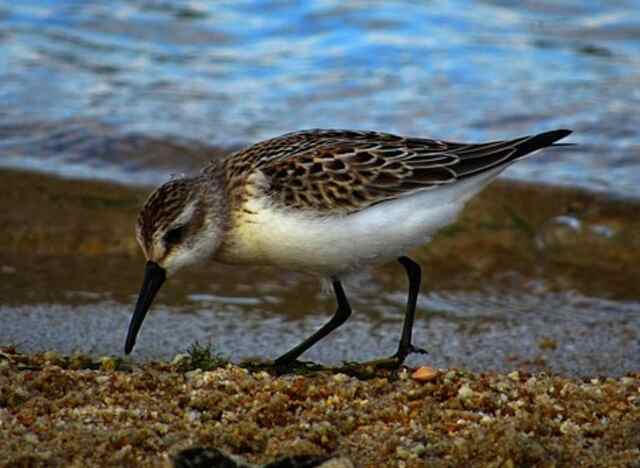
The Western Sandpiper (Calidris mauri) is a small shorebird, measuring around 6.5 inches in length and weighing about 22-35 grams. Its plumage is mainly brown, with darker streaks on the back and white underparts.
These birds breed in the Arctic tundra and migrate to the west coast of North America during the non-breeding season. They prefer mudflats, estuaries, and coastal wetlands as their habitat, where they feed on small invertebrates such as crustaceans, mollusks, and insects.
In contrast, Seagulls are larger birds with a body length of around 18 to 30 inches and weigh between 0.5 to 1.5 kg. They have a wide range of colors, including white, gray, and brown, depending on the species. Seagulls are found all over the world, inhabiting coastal areas, beaches, and cities.
They are omnivores and feed on a variety of food sources, including fish, insects, and even garbage. While both birds have similar habitats, Seagulls are generally larger, more varied in appearance, and have a more diverse diet compared to the Western Sandpiper.
Sanderling
The Sanderling is a small, plump wading bird with a straight, medium-length bill and short legs. They have a distinctive breeding plumage with rust-colored markings on the face, neck, and chest. During the non-breeding season, their plumage is mostly white and gray.
Sanderlings are found in the coastal regions of six continents and migrate long distances each year. They prefer sandy beaches, mudflats, and estuaries as their habitat. Their diet consists mainly of small invertebrates such as crustaceans, mollusks, and insects, which they pick up from the sand or shallow water.
Seagulls are a group of medium to large-sized birds with a wide range of colors and patterns. They are found worldwide and inhabit a variety of habitats such as beaches, coastal cliffs, and urban areas. Seagulls are opportunistic feeders and have a diverse diet consisting of fish, insects, rodents, and even garbage.
Unlike the Sanderling, Seagulls are not exclusively wading birds and have adapted to various types of habitats. They also have a broader range of colors and patterns in their plumage, and their size can vary greatly depending on the species. Seagulls are known for their scavenging habits and are often seen in large flocks near human settlements.
Ruddy Turnstone
The Ruddy Turnstone (Arenaria interpres) is a small, stocky shorebird with a distinctive pattern of black, white, and chestnut feathers. During the breeding season, males display a bright rufous coloration on their head and neck. They are widespread and migrate over long distances, breeding in Arctic tundra and wintering in coastal habitats around the world.
They are omnivorous and feed on a variety of prey including crustaceans, mollusks, and insects. Ruddy Turnstones are also known for their habit of flipping over stones and shells to find hidden prey. While both the Ruddy Turnstone and Seagull are birds commonly found on coastal habitats, there are notable differences between them.
Seagulls are larger, with a wingspan of up to 5 feet, while Ruddy Turnstones are typically no larger than a robin. Seagulls are typically white or gray, while Ruddy Turnstones have a distinct black, white, and chestnut coloration.
Seagulls are opportunistic feeders and will eat almost anything, including fish, insects, and human food scraps, while Ruddy Turnstones primarily feed on crustaceans and mollusks. Finally, Seagulls are known for their scavenging habits, while Ruddy Turnstones are more likely to actively forage for food.
Willet
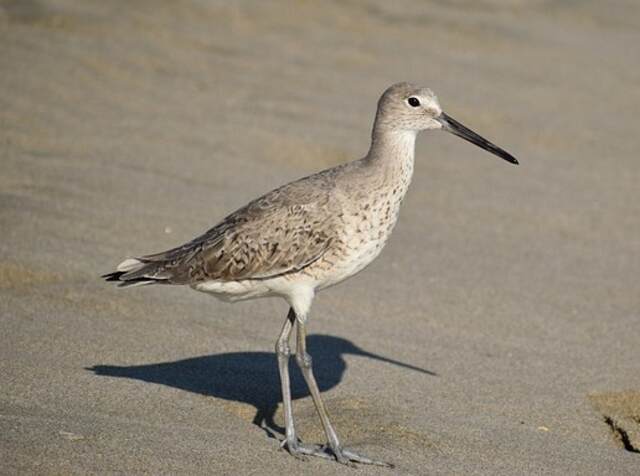
The Willet (Tringa semipalmata) is a large shorebird that can be found throughout North and South America. They have a distinctive long, straight bill and gray-brown plumage with black and white wing markings. Willets prefer to live in coastal habitats such as sandy beaches, mudflats, and marshes.
Their diet consists of a variety of invertebrates such as crabs, clams, and worms, which they catch by probing the sand or mud with their bills. In contrast to the Willet, Seagulls, or more accurately known as gulls, are a diverse group of birds that can be found worldwide.
They come in many different shapes, sizes, and colors, but most have webbed feet, a hooked bill, and a distinctive call. Like Willets, gulls can be found in coastal habitats, but they are also common in inland areas such as cities and agricultural fields.
Gulls have a varied diet, which can include fish, insects, rodents, and even garbage. While they share some similarities in habitat and diet, gulls are generally larger and more aggressive than Willets, with more complex social behaviors such as flocking and nesting in colonies.
Sandwich Tern
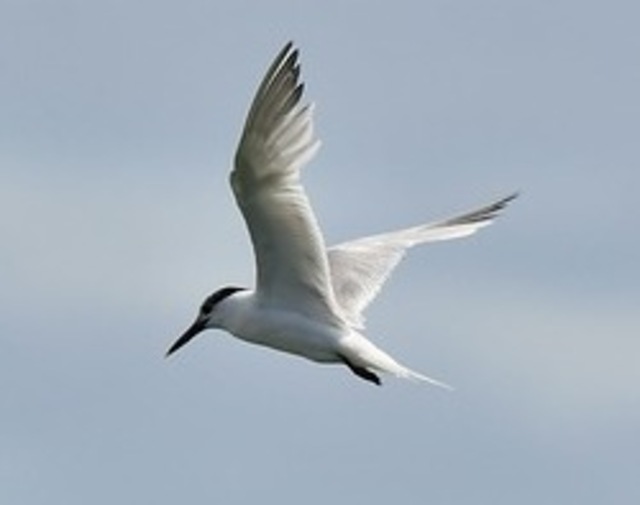
The Sandwich Tern is a beautiful seabird with a distinctive black crest on its head, long sharp bill, and white body plumage. These birds have a wingspan of about 100 cm and weigh around 350 grams. They breed in large colonies along sandy beaches, estuaries, and dunes in Europe, Asia, and Africa.
Sandwich Terns feed mainly on small fish, which they catch by diving into the water from the air. They are migratory and spend their winter months in warmer coastal regions of West Africa. Compared to the Sandwich Tern, Seagulls are larger and have a more robust body, with a broad wingspan of up to 155 cm.
They come in a variety of colors, including gray, white, and brown. Seagulls are found in coastal areas worldwide and feed on fish, crustaceans, and other small animals. They are opportunistic feeders and often scavenge for food in urban areas.
Unlike Sandwich Terns, Seagulls are not exclusively found near the ocean and can also be seen near lakes and rivers. While they may share some similarities in diet and habitat, their appearance, size, and behaviors are quite different.
Little Egret
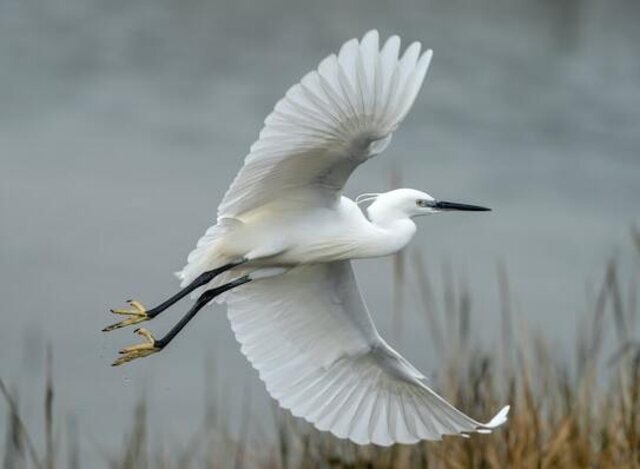
The Little Egret, also known as Egretta garzetta, is a small and elegant water bird belonging to the heron family. It measures between 55-65 cm in length, with a wingspan of 88-106 cm. The Little Egret is recognized for its snowy-white plumage, black legs, and yellow feet.
This species is commonly found across Europe, Africa, and Asia, and its preferred habitats are wetlands, rivers, lakes, and estuaries. The Little Egret feeds mainly on small fish, insects, and crustaceans, and it uses its long, slender bill to spear prey with precision.
The Seagull, also known as Laridae, is a family of seabirds with a wide range of species. Unlike the Little Egret, Seagulls have a more robust and rounded body, with a wingspan of up to 1.7 meters. They are usually gray or white, with black markings on their wings and a hooked beak.
Seagulls inhabit coastal regions, and they are known for their opportunistic feeding habits. They feed on a variety of food sources, including fish, insects, mollusks, and even human refuse. While both species are water birds, Seagulls have adapted to live near the sea, while the Little Egret prefers freshwater habitats.
Why It’s Important to Differentiate Between Seagulls and Other Birds?
It’s important to be able to differentiate between seagulls and other similar-looking birds for a variety of reasons. One of the main reasons is that different birds have different behaviors, diets, and habitats, and mistaking one bird for another can lead to misunderstandings and misinterpretations.
For example, if you’re a birdwatcher and you misidentify a bird, you may miss out on observing unique behaviors or patterns of that specific bird species. Additionally, if you’re participating in a beach cleanup, it’s important to know which bird species are present in the area to ensure that any environmental impact is minimized.
Differentiating between seagulls and other similar-looking birds can also help in identifying potential threats or hazards to human safety. For instance, certain bird species such as ospreys and bald eagles can be more aggressive towards humans and may pose a risk to people in the area.
Overall, having knowledge about the different characteristics and behaviors of various bird species can help us better understand the natural world around us and promote better conservation efforts.
Conclusion
In this blog post, we’ve discussed 30 different bird species that look like seagulls but aren’t. We’ve highlighted the key differences between seagulls and these other bird species and discussed why it’s important to be able to differentiate between them.
Knowing the unique characteristics and behaviors of different bird species can help us better understand and appreciate the natural world around us, as well as promote better conservation efforts. We hope that this blog post has been informative and helpful in expanding your knowledge about birds.
There’s always more to learn, so we encourage you to continue exploring and observing the fascinating world of birds. Whether you’re a birdwatcher or just someone who enjoys learning about nature, there’s always something new to discover about these amazing creatures.
Related Post: 21 Amazing Facts About Seagulls (with Photos & Details)


